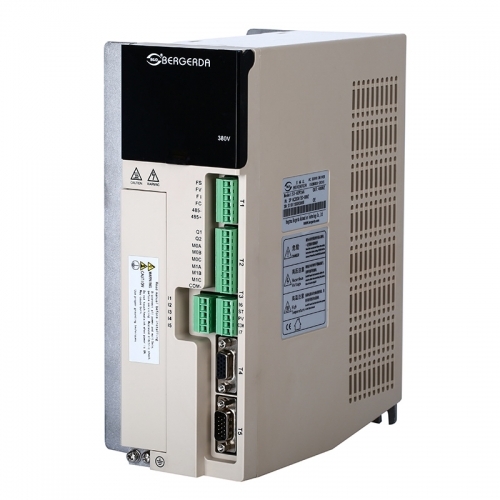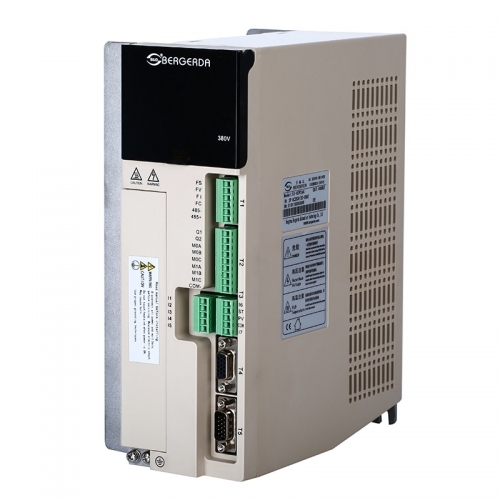FAQ of our stepping motor and driver
发布日期:2018-07-23 作者: 点击:
Stepper motor application frequently asked questions
1, what is a stepper motor? Under what circumstances should I use a stepper motor?
A stepper motor is an actuator that converts electrical pulses into angular displacement. To put it bluntly: when the stepper driver receives a pulse signal, it drives the stepper motor to rotate a fixed angle (and step angle) in the set direction.
You can control the angular displacement by controlling the number of pulses to achieve accurate positioning. At the same time, you can control the speed and acceleration of the motor by controlling the pulse frequency to achieve the purpose of speed regulation. Therefore, stepper motors can be considered when accurate positioning or speed control is required.
2, which kinds of stepper motors? What's the difference? Top
There are three types of stepping motors: permanent magnet (PM), reactive (VR) and hybrid (HB).
The permanent magnet stepping is generally two-phase, the torque and the volume are small, and the step angle is generally 7.5 degrees or 15 degrees;
The reactive stepping is generally three-phase, which can achieve high torque output. The step angle is generally 1.5 degrees, but the noise and vibration are very large. Developed countries such as Europe and the United States have been eliminated in the 1980s.
Hybrid stepping refers to the advantage of mixing permanent magnets and reactive equations. It is further divided into two-phase four-phase and five-phase: the two-phase angle is generally 1.8 degrees and the five-phase step angle is generally 0.72 degrees. This stepper motor is the most widely used.
3. What is the holding torque (HOLDING TORQUE)?
HOLDING TORQUE is the torque at which the stator locks the rotor when the stepper motor is energized but not rotating. It is one of the most important parameters of a stepper motor. Usually, the torque of the stepper motor at low speed is close to the holding torque. The greater the holding torque, the stronger the load capacity of the motor. Since the output torque of the stepping motor is continuously attenuated with the increase of the speed, the output power also changes with the increase of the speed, so the holding torque becomes one of the important parameters for measuring the stepping motor. For example, when people say that a 2N.m stepper motor, unless otherwise specified, is a stepper motor that maintains a torque of 2N.m.
4, there are several driving methods for stepper motors?
Generally speaking, the stepping motor has two kinds of constant voltage and constant current driving, and the constant voltage driving has been eliminated recently. At present, constant current driving is generally used.
5. What is the accuracy of the stepper motor? Do you accumulate?
The accuracy of a general stepper motor is 3-5% of the step angle. The single step deviation of the stepping motor does not affect the accuracy of the next step, so the stepper motor accuracy does not accumulate.
6. What is the allowable temperature of the stepper motor?
Excessive temperature of the stepper motor will first demagnetize the magnetic material of the motor, resulting in a drop in torque or even loss. Therefore, the maximum allowable temperature of the motor surface should depend on the demagnetization point of the magnetic material of different motors; in general, the demagnetization point of the magnetic material is above 130 degrees Celsius, so the external temperature of the stepper motor is completely normal at 80-90 degrees Celsius.
7. Why does the torque of the stepper motor decrease with the increase of the speed?
When the stepper motor rotates, the inductance of each phase winding of the motor will form a back electromotive force; the higher the frequency, the larger the back electromotive force. Under its action, the motor decreases with increasing frequency (or speed), resulting in a drop in torque.
8.why the stepper motor can run normally at low speed, but if it is higher than a certain speed, it can not be started, accompanied by howling?
The stepping motor has a technical parameter: the no-load starting frequency, that is, the pulse frequency that the stepping motor can start normally under no-load conditions. If the pulse frequency is higher than this value, the motor cannot start normally, and lost or blocked may occur. In the case of load, the starting frequency should be lower. If the motor is to be rotated at a high speed, the pulse frequency should have an acceleration process, that is, the starting frequency is low, and then rise to a desired high frequency (the motor speed is increased from a low speed to a high speed) at a certain acceleration. We recommend that the no-load start frequency be selected to be twice the number of pulses required for the motor to run one revolution.
9. How to overcome the vibration and noise of the two-phase hybrid stepping motor at low speed?
The vibration and noise of the stepping motor at low speed is its inherent shortcoming. Generally, the following scheme can be used to overcome: A. If the stepping motor works just in the resonance zone, the stepping motor speed can be improved by changing the reduction ratio. B. Using a drive with subdivision, this is the most common and easiest way. Because the phase current of the subdivided driver motor is more gradual than the half step. C. Change to a stepper motor with a smaller step angle, such as a three-phase or five-phase stepper motor, or a two-phase subdivision stepper motor. D. Switch to DC or AC servo motor to almost completely overcome vibration and noise, but the cost is high. E. A magnetic damper is added to the motor shaft. This product is available on the market, but the mechanical structure changes greatly.
10. Does the number of subdivisions of the subdivision drive represent accuracy?
The subdivision technology of the stepping motor is essentially an electronic damping technology (please refer to the relevant literature). Its main purpose is to reduce or eliminate the low frequency vibration of the stepping motor, and improve the running accuracy of the motor is only a supplementary function of the subdivision technology. For example, for a two-phase hybrid stepping motor with a step angle of 1.8 degrees, if the subdivision number of the subdivision driver is set to 4, then the operating resolution of the motor is 0.45 degrees per pulse, and whether the accuracy of the motor can reach or approach 0.45 degrees, also depends on other factors such as the subdivision current control accuracy of the subdivision driver. The accuracy of subdivision drivers from different manufacturers may vary greatly; the larger the number of subdivisions, the more difficult it is to control.
11.What is the difference between the series connection method and the parallel connection method of the eleven-phase four-phase drive combined stepping motor and the driver?
The four-phase hybrid stepping motor is generally driven by a two-phase driver. Therefore, the four-phase motor can be connected to two phases by series connection or parallel connection. The series connection method is generally used when the motor speed is relatively high. At this time, the required output current of the driver is 0.7 times of the motor phase current, so the motor generates less heat; and the connection method is generally used in the case where the motor speed is high (also called high-speed connection method), and the required driver output current is the motor phase current. 1.4 times, so the motor heat is large.
12. How to determine the DC power supply for stepper motor driver?
A. Determination of the power supply voltage of the hybrid power supply The power supply voltage of the hybrid stepper motor driver is generally a wide range (for example, the supply voltage of the 2NS556 is 24-48VDC), and the power supply voltage is usually selected according to the operating speed and response requirements of the motor. . If the motor has a higher operating speed or a faster response, the voltage is also higher, but note that the ripple of the supply voltage cannot exceed the maximum input voltage of the drive, otherwise the drive may be damaged. If the motor is running at a lower speed, consider a lower voltage selection. B. Determination of the output current of the power supply The supply current is generally determined according to the output phase current I of the driver. If a linear power supply is used, the supply current can generally be 1.1-1.3 times that of I; if a switching power supply is used, the supply current can generally take 1.5-2.0 times that of I. If a power supply supplies power to several drives at the same time, consider that the current of the power supply should be doubled appropriately.
13. Under what circumstances is the enable signal Ena of the hybrid stepping motor driver generally used?
When the enable signal Ena is at a low level, the current output from the driver to the motor is cut off, and the motor rotor is in a free state (offline state). In some automation equipment, if it is required to manually turn the motor shaft directly when the drive is unpowered, Ena can be set low, the motor can be taken offline, and manually operated or adjusted. After manual completion, set the Ena signal high to continue automatic control.
14. How to adjust the direction of rotation of the two-phase stepper motor after power-on in a simple way?
Simply swap the A+ and A- (or B+ and B-) wires of the motor to the drive.
本文网址:
关键词:servomotor,servodrive,steppermotor
Related Products:
related news:
- 2021 Guangzhou International Industrial Automation Exhibition
- 2023 Brazil exhibition
- 2019 Mumbai Automation EXPO
- Internet plus represents a new economic form
- Integrate Internet tools
- 2021 Shenzhen Industrial Machinery Exhibition
- Notice of identification of counterfeit bergdahl products
- Special servo and stepping motor for mask machine
- Guangdong industrial automation exhibition







